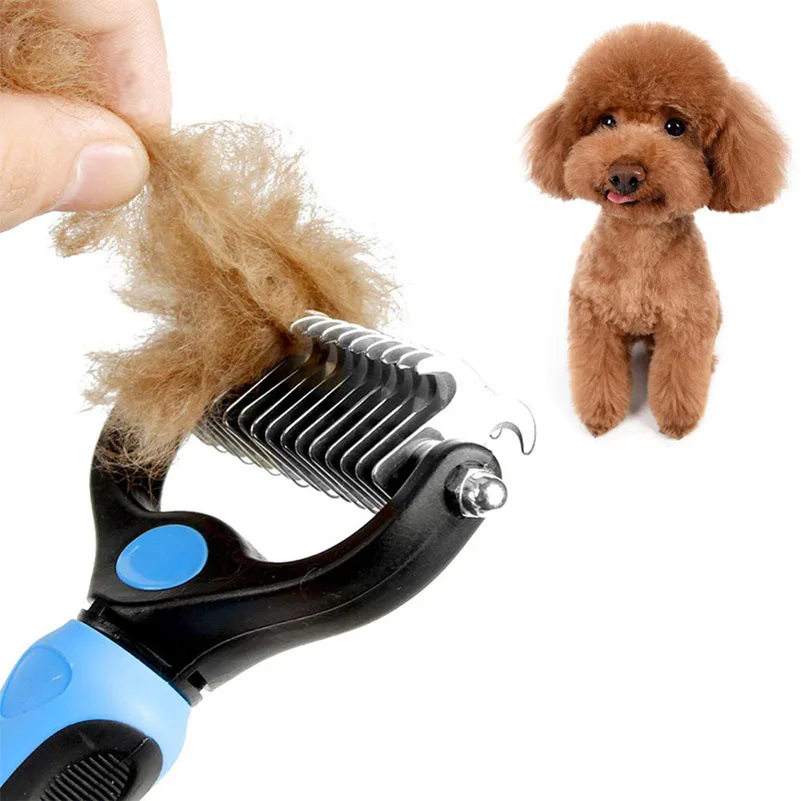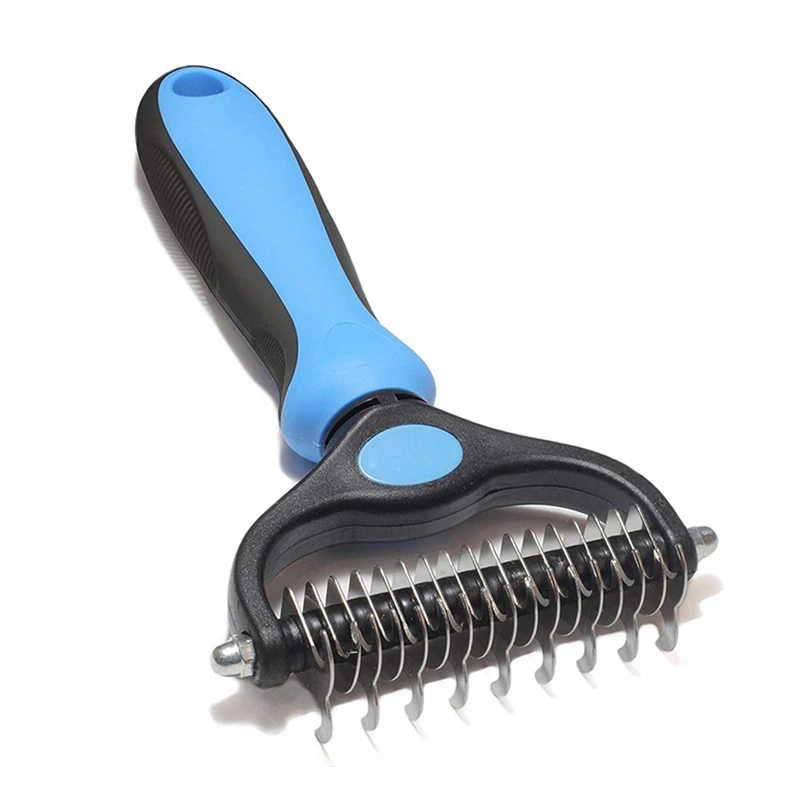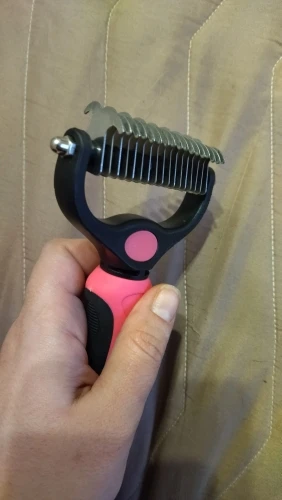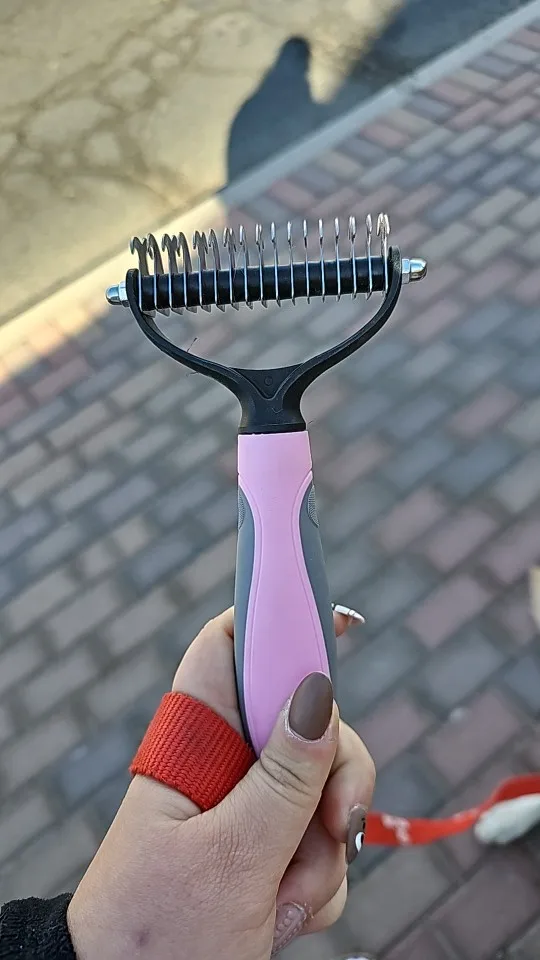





ourlum.com
Professional Dual-Head Pet Deshedding Brush for Dogs Cats
Professional Dual-Head Pet Deshedding Brush for Dogs and Cats
Transform your grooming routine with the Professional Dual-Head Pet Deshedding Brush for Dogs and Cats. This expertly designed grooming tool is perfect for pet owners who seek an efficient and enjoyable way to keep their furry friends looking their best. Its dual-head design allows for seamless transitions between dematting and deshedding, making it a versatile choice for various coat types.
Key Features
- Innovative Dual-Head Design: Two unique sides for unmatched grooming flexibility - switch between dematting and deshedding in one easy stroke.
- Skin Safe Technology: Rounded teeth ensure a gentle touch, providing a pain-free experience while effectively removing loose hair.
- Versatile for All Fur Types: Ideal for thick, long fur as well as short hair, making it an essential tool for every pet owner.
- Durable and Long-Lasting: Constructed from high-quality stainless steel, this brush is built to endure, even suitable for larger animals like horses.
- Comfortable Easy Grip Handle: Designed with a non-slip handle for a secure grip, allowing effortless grooming through the toughest tangles.
Why Choose Our Deshedding Brush?
Grooming doesn't have to be a hassle anymore. The Professional Dual-Head Pet Deshedding Brush for Dogs and Cats not only simplifies the grooming process but also strengthens the bond between you and your pet. Your furry friend deserves the best, and this brush ensures they look and feel fantastic.
Customer Satisfaction Guaranteed
We value your feedback! If you’re happy with our product, we encourage you to leave positive comments. Our goal is to provide excellent service, and your support means everything to us.
Shipping Information
We ship worldwide using United States Postal Service, EMS, or DHL. Enjoy free shipping on orders under 2 KG, with a delivery time of 10-30 days. For larger orders, choose EMS or DHL for faster delivery within 5-7 days.
Get in Touch
If you have any questions or need assistance, don’t hesitate to contact us. We’re here to help you find the perfect grooming solution for your pet!











Top rated similar items:
-


-

 Pets First Professional Pet Brush for... From $10.99 /
Pets First Professional Pet Brush for... From $10.99 / -

 Professional Pet Grooming Brush - Dua... From $11.99 /
Professional Pet Grooming Brush - Dua... From $11.99 / -

 Professional Pet Grooming Brush for C... From $11.99 /
Professional Pet Grooming Brush for C... From $11.99 /
Related Products:
-


-

 Cat Grooming Brush Non-slip Stainless... From $12.99 /
Cat Grooming Brush Non-slip Stainless... From $12.99 / -


-


-

 Pet Deshedding Brush: Dual-Sided Groo... From $14.99 /
Pet Deshedding Brush: Dual-Sided Groo... From $14.99 / -

 Pet Grooming Comb: Shedding Trimming ... From $10.99 /
Pet Grooming Comb: Shedding Trimming ... From $10.99 / -


-

 Pet Grooming Glove Deshedding Brush a... From $8.99 /
Pet Grooming Glove Deshedding Brush a... From $8.99 / -


-


-


-

 Pets First Professional Pet Brush for... From $10.99 /
Pets First Professional Pet Brush for... From $10.99 / -

 Professional Pet Grooming Brush - Dua... From $11.99 /
Professional Pet Grooming Brush - Dua... From $11.99 / -

 Professional Pet Grooming Brush for C... From $11.99 /
Professional Pet Grooming Brush for C... From $11.99 /




















































